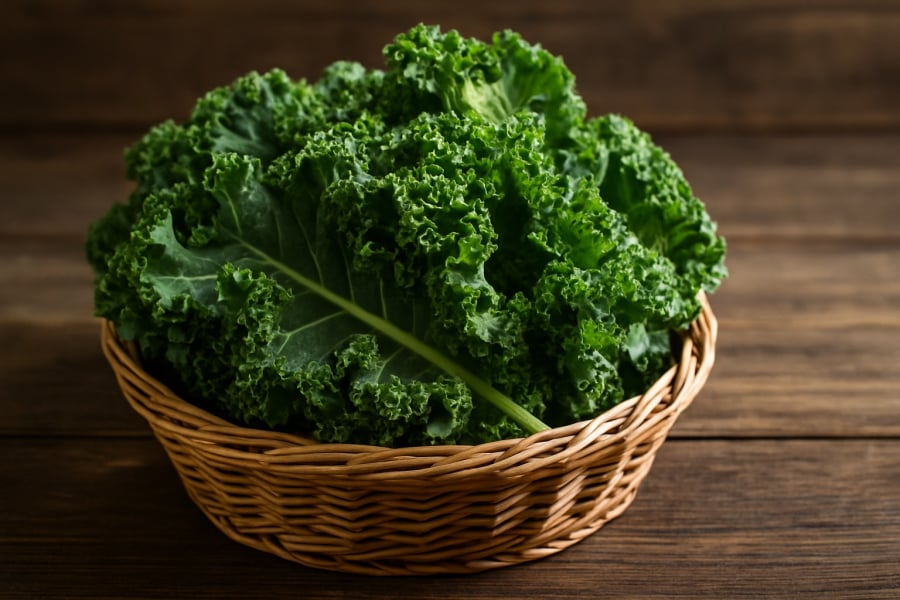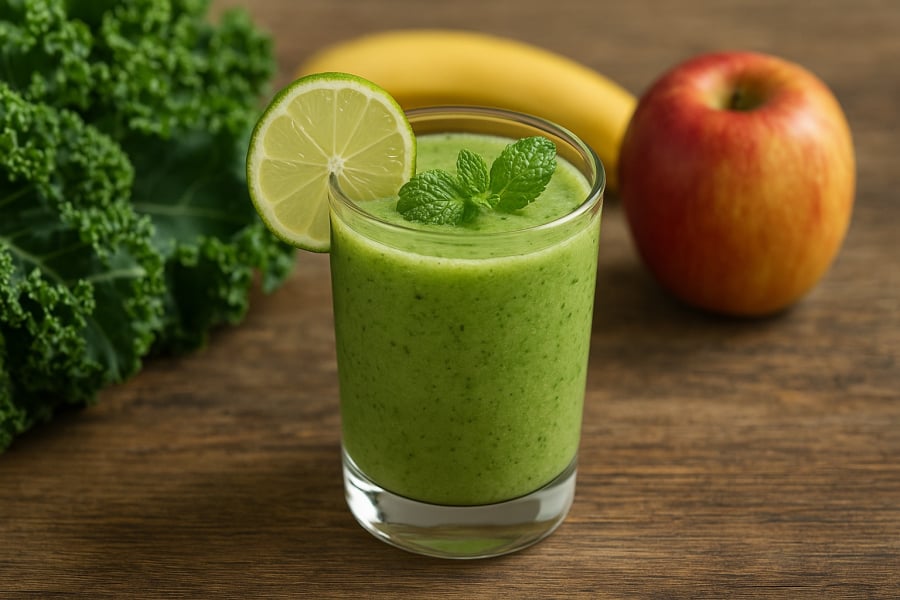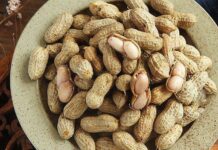Curly Kale: Nature’s Calcium Treasure
Curly kale, a leafy green vegetable, is considered a “superfood” in the world of healthy eating. Data from the United States Department of Agriculture (USDA) reveals that 100g of kale contains up to 254mg of calcium, almost double the amount found in 100g of whole cow’s milk (approximately 123mg).
This is great news for those who are lactose intolerant or simply looking for a plant-based source of calcium. In addition to calcium, kale is packed with fiber, vitamins K, C, and A, potassium, magnesium, and antioxidants such as lutein and zeaxanthin, which help protect eyesight and prevent premature aging.

Amazing Benefits of Eating Kale Regularly
Lower Cholesterol and Heart Health
According to a study published in Health magazine, participants who consumed 150ml of kale juice daily for 12 weeks experienced a significant reduction in “bad” LDL cholesterol while increasing “good” HDL cholesterol. The antioxidants in kale also help prevent atherosclerosis, a cause of heart disease.
Bone Health
The calcium in kale is more easily absorbed by the body due to the presence of vitamin K, which helps bind calcium to bones. This “perfect combo” increases bone density and prevents osteoporosis and fractures in older adults.
Liver Support and Cancer Prevention
Kale contains unique compounds such as sulforaphane and indole-3-carbinol, which have been shown to support liver detoxification and inhibit the growth of cancer cells, especially in breast, lung, and colorectal cancers.
Vision and Skin Health
The carotenoids lutein and zeaxanthin in kale help prevent age-related macular degeneration, a leading cause of blindness in older adults. Additionally, the vitamin C and beta-carotene in kale promote healthy, wrinkle-free skin.
Digestive Health and Weight Loss
Kale is rich in fiber, which increases satiety, supports healthy weight loss, and improves digestive function while preventing constipation.

How to Include Kale in Your Diet
Kale is versatile and can be prepared in a variety of dishes, such as:
- Stir-frying with garlic or mushrooms
- Boiling or steaming, served with a ginger dip
- Making a salad with olive oil and lemon juice
- Blending into a smoothie with banana, apple, or pineapple
- Baking into crispy kale chips for a healthy snack
However, it is recommended to avoid cooking kale at very high temperatures or for extended periods to preserve its vitamins and enzymes.
Additionally, those with thyroid issues should consume kale in moderation as it contains goitrogens, which can interfere with thyroid function if consumed in excess and uncooked over a long period.
Expert Opinion on Kale
“Kale is one of the most nutrient-dense vegetables you can eat,” says Dr. Annelie Vogt von Heselholt, a clinical nutritionist in the US. “It’s not only high in calcium but also offers a wide range of benefits for heart health, bone strength, skin, and immune function.”
In Vietnam, kale is commonly grown in Da Lat and other highland regions, and it is readily available in most supermarkets and vegetable stores. Its affordability and ease of preparation have made it a popular choice for many families.
In Conclusion
With its impressive health benefits, kale deserves a place in your weekly meal plan. Whether it’s a comforting bowl of kale soup or a refreshing morning smoothie, this superfood is a natural remedy to support your overall well-being.
“Maximizing Your Child’s Height and Health: The Role of Quality Milk”
The World Health Organization (WHO) recommends including dairy milk as a part of young children’s daily diets. However, to choose truly quality milk, parents must consider its origin, the soil, and the farming environment, as these are the core factors that determine the nutritional quality of the milk your child consumes.





































